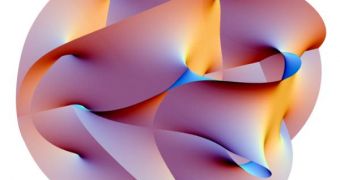Over the past two decades, string theory has been touted as the best chance physics have of combining quantum mechanics with general relativity. This would essentially set the basis for the long-sought-after Unified Theory of Everything (UTE), which would include all the four essential forces in the Universe – gravity, electromagnetism, and the strong and weak nuclear forces. While its success has been limited until now, physicists have recently announced that they may have found a way to explain superconductivity using strings.
When materials become superconductors, usually at either very low or very high temperatures, their internal structures are modified to the extent that they exhibit zero electrical resistance values, and their interior magnetic field is excluded. This means that an electrical current, once introduced in a superconductor, can flow in a loop indefinitely, with no external power supply. This makes accumulating electricity very easy and enables a wide range of scientific applications in high-energy physics, where enormous amounts of current are needed to get things going.
At a workshop held this month at the Kavli Institute for Theoretical Physics, in Santa Barbara, California, physicists from the Harvard University, led by Condensed-Matter Theorist Subir Sachdev, argued that they discovered a way to explain this behavior that materials had, using string theory. The paper presented at the meeting, which is not even in pre-print at this point, “suggests that we are on the verge of understanding a new state of matter using a string-theory description,” Sachdev said, quoted by Nature News.
Kavli Institute String Theorist Joseph Polchinski, who has been a co-organizer of the workshop with Sachdev and Harvard University postdoctoral researcher Sean Hartnoll, believes that this theory could be used to explain the flow of electrons in high-temperature superconductors in very much the same way it was employed to explain phenomena occurring inside black holes. The key technique from string theory that was used is the one that allows for the expression of content from a higher dimension in an inferior one. The principle can be compared to a hologram, where 3D data is stored in a 2D layer.
There are, however, critics to string theory. They do not say that it does not work, but merely that the wave of enthusiasm sweeping physicists may be unfounded. “Just because a model works in one context, doesn't mean you can unify physics and get a fundamental theory of reality,” Columbia University Mathematician Peter Woit, who is an outspoken string theory critic, said.

 14 DAY TRIAL //
14 DAY TRIAL //